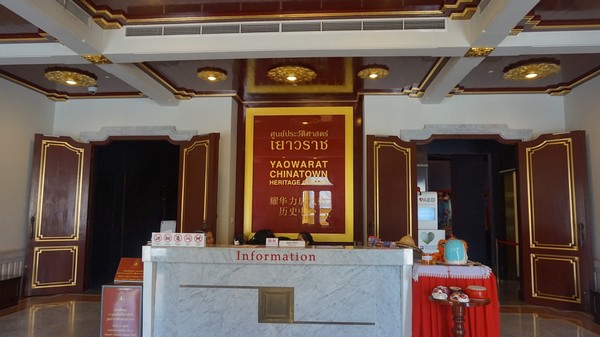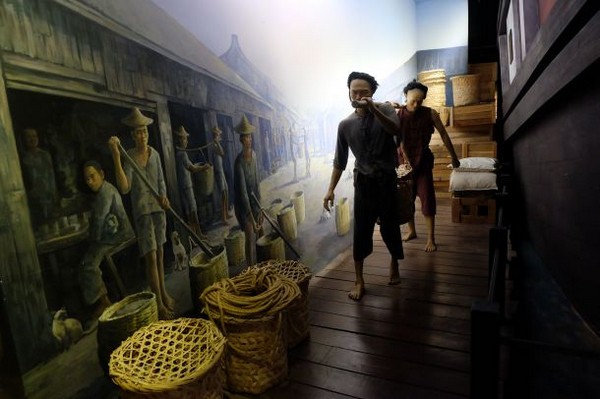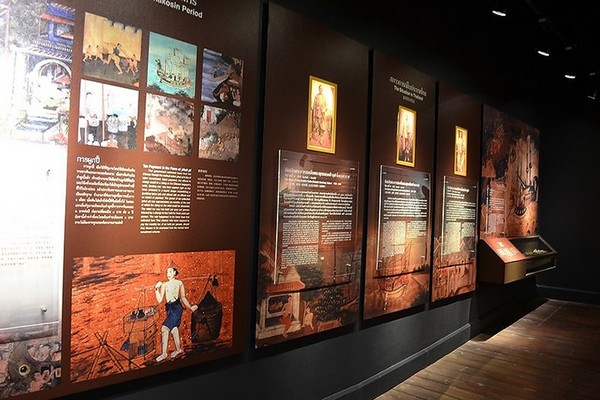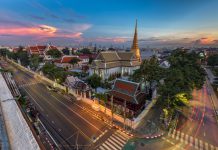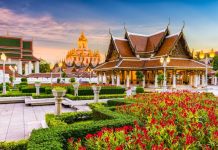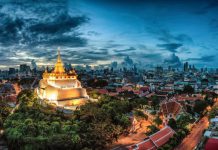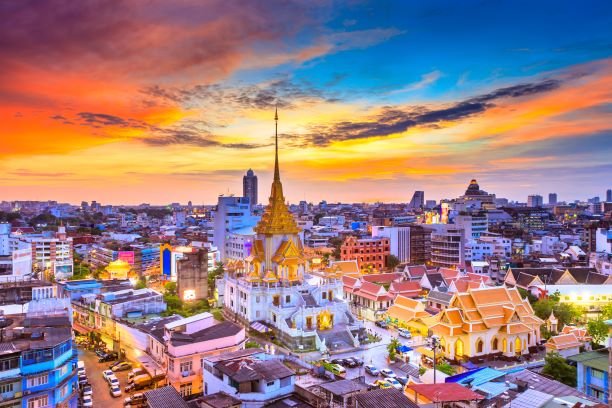
Wat Traimit Withayaram Wora Vihara, the temple of the Giant Golden Buddha
Wat Traimit Withayaram Wora Vihara is an old temple which a former name is “Wat Sam Jeen Tai”. The monastery is one of the most interesting Buddhist temples to visit in Bangkok among the tourists both Thai and foreigners. The most striking sacred object of the temple which attracts lots of visitors to come here is “Phra Sukhothai Traimit” the pure gold Buddha image in the attitude of subduing Mara which enshrined inside vihara (chapel) of the temple. The notably Buddha image recognized and recorded by the Guinness Book of World Records that it is the “Biggest Golden Buddha Image in the World”.
Biggest Golden Buddha Image in the World
The interior of the ubosot is where to house the main Buddha image which called “Phra Buddha Dhosapholayan”, a stucco Buddha image with lacquered and gilded that is also renowned among the local is “Luang Pho To” or “Luang Pho Wat Sam Jeen”. The worshipful image is very famous among the people to come to pray for luck. Furthermore, King Chulalongkorn or Rama V of Chakri House visited the site and also appreciated the Buddha image that it is such magnificent and delicate of art.
History of the Monastery
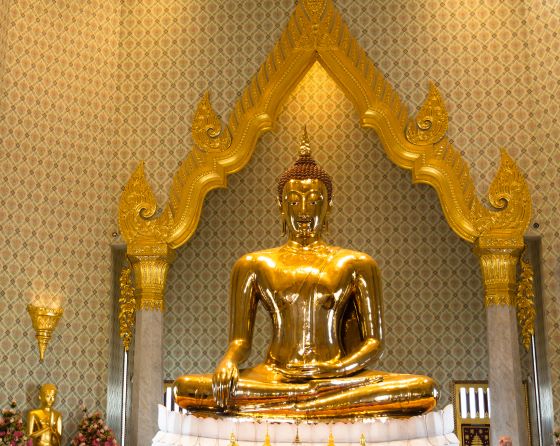
Wat Traimit Withayaram Wora Vihara locates on Thai-Chinese Friendship Road, Talad Noi sub-district, Samphanthawong district in Bangkok where is counted in the China Town of Bangkok. So-called the name in short “Wat Traimit” is an ancient temple stands over the lowland, and the main structures are in wood. The temple originally called as “Wat Sam Jeen” of which it assumed that the temple was built by three Chinese in order to make the merit by building or donate to renovate the monastery.
In 1937, Phra Maha Gim Suwannachart, the substitute to the abbot was one who initiated to restore the monastery complex. Later in 1940, the temple had approved from The Sangha Supreme Council of Thailand to renovate the temple. Then, in 1942 the party of the merchant, people, teacher, and student coordinated to restore the complex and renamed to “Wat Traimit Withayaram” which means “the Three companions collaborate to build the temple”. Additionally, the temple is the venue of the Buddhist learning school and a public school “Traimit Vidyalaya School” located within the area of the temple, as well.
The Interesting Sacred Objects at Wat Traimit
Phra Maha Suwan Patimakorn

Phra Buddha Maha Suwan Patimakorn, the world’s most prominent pure gold Buddha image
“Phra Maha Suwan Patimakorn” or renowned locally is “Luang Pho Thongkham” or “Phra Sukhothai Traimit” of which the significant sacred thing of the temple. The image is pure gold that is recorded by the Guinness Book of World Records to be “the Biggest Solid Gold Buddha Image” in the world, and also it recognized “the most valuable sacred object in the world”, as well. Therefore, Phra Maha Suwan Patimakorn is very precious and worthy to worship and preserve, indeed. The costly gold statue is 3.01 wide of lap size with 3.91 meters high. Notably, the figure is separable into 9 images, and the Buddha image from the base upwards is 40% pure gold and 80% gold for the face. The knot is 45 kg which is 99.99% pure gold!!
Story of Phra Maha Suwan Patimakorn
It assumed that the Buddha image cast in Sukhothai era and housed at Wat Mahathat Sukhothai formerly. Later, King Rama I of Rattanakosin Kingdom commanded the Front Palace – Somdet Phra Bawornrajchao Maha Sura Singhanat to invite the essential sacred object from the north to enshrine at the major monasteries in the capital. There were lots of Buddha images invited to the city resulting in it’s hard to take care entirely objects appropriately.
So, a nobleman surreptitious skinned the gold from the image and brought the gold to the temple that he built, and the Buddha image was relocated to Wat Phraya Grai (Wat Chotikaram), finally. Afterwards, East Asiatique Company leases the land of the temple which was deserted temple at that time to settle a sawmill. Disgraceful, the Buddha image was moved to house next to the pagoda and covered with shack with the galvanized iron roof and had lasted there for nearly 20 years.
Then, after the completion of the new ordination hall and chapel, thence the Buddha image respectful invited to enshrine inside the chapel. Surprisingly, the plaster skin covered the statue cracked resulted in seeing the gold Buddha image within dated on May 25, 1955.
Discovery of the golden statue
On the one hand, the supposition by some scholars noted that the Golden Buddha might be cast during the 13th-14th century according to the oval-shaped Buddha’s head which is a distinct signature of the Sukhothai art. Notwithstanding, there’s some belief the image cast in India in about that period and then passed on many countries. That is to say, the parts of the figure, hence came from India and in the 14th century, the Buddha image arrived at the Ayutthaya Kingdom.
To protect the precious image from stealing during the battle, so that the image was covered with the layers of plaster. It was such good protection caused the statue had saved among the ruins after the collapse of Ayutthaya Kingdom. In the early of 18th century, the Buddha moved to locate at Wat Chotinaram in Yaowarat (China Town Bangkok); unfortunately, it is another time that the image and the temple were abandoned until it relocated to Wat Traimite in May 1955.
Astonishingly, while the workers were transporting the statue one of the string tore resulted to the Buddha image dropped on the floor and the plaster that covered the image chipped to allow the people to see the brilliant gold inwardly. And that is the debut of the Golden Buddha which became one of the most famous Buddhist holy objects in Bangkok and in the country, since then.
Phra Buddha Dhosapholyan
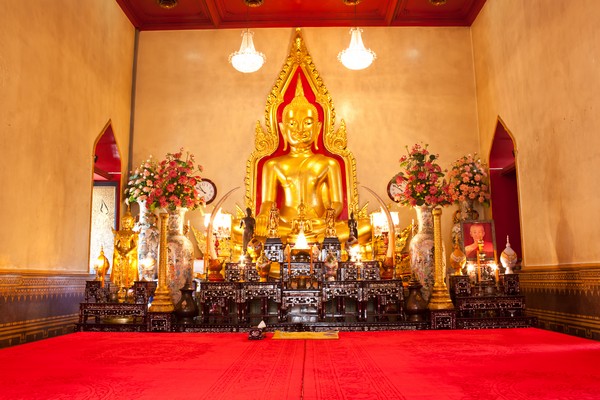
Apart from the renowned Golden Buddha, there is another essential worshipful figure enshrined inside the ordination hall at Wat Traimit. The principal Buddha statue in the ubosot or so-called formal name “Phra Buddha Dhosapholyan” – a stucco image with lacquered and covered with gold leaves. Thus, the people called “Luang Pho To” or “Luang Pho Wat Sam Jeen”.
The Buddha image is very appreciative of the Buddhist to pray and make a wish with the jasmine garland. King Chulalongkorn used to visit the site to praise the Buddha at the monastery, and he appreciated the character of the Buddha. Luang Pho Mo, a former abbot of the temple, once made the amulet which copied from this Buddha image and named “Luang Pho To Wat Sam Jeen”, and it became a famous sacred object among the people regarding the sanctity. Currently, the amulet is kind of rare items.
Knowing about the China Town of Bangkok at Wat Trimit
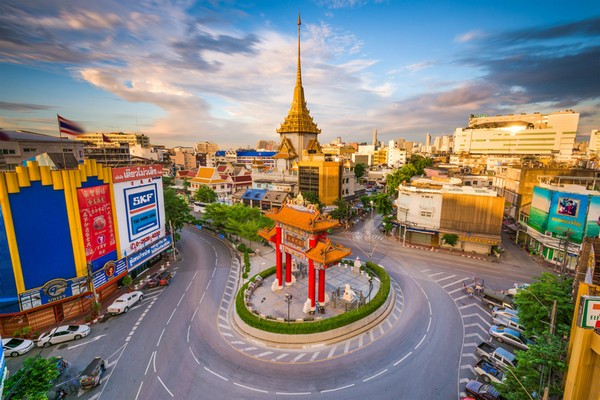
Retracing the way of life of the people in Yaowarat, the Chita Town Bangkok that has rooted over the land for over decades. The precious memory and story are collected and displayed notably at Yaowarat Chinatown Heritage Center locating within the monthop (the square pavilion) another remarkable architecture of Wat Traimit that the tourists should not miss when you take the tour at this monastery.
The Yaowarat Chinatown Heritage Center is unique in its concept and presentation with the story of the Chinese from oversea China who migrated to Thailand with nothing for a long time ago. And the glory of the Chinese living on the golden street in Bangkok.
Yaowarat Chinatown Heritage Center stands on the 2nd floor of the monthop at Wat Traimit Withayaram. The place features the emigration of the Chinese from mainland China to Thailand from now and then. The centre contains 6 sections which orderly display by period namely;
6 Sections inside Yaowarat Chinatown Heritage Center
1. A Glance into the past: A presentation to welcome you to the life in Chinatown which telling by the typical grandfather to his grandson about the life in Chinatown Bangkok in the 1940s.
2. Emerge of the Chinatown of Rattanakosin (early history 1782-1851): The origin of the Chinatown – Sampheng community and the arrival of the Chinese from the oversea China during King Rama I-Rama III’s era until the land became one of the most potential commercial districts in Bangkok.
3. A Path to the Golden Age (1851-1957): The progression of the Chinatown formerly “Sampheng Market” to the modern business community on Yaowarat Road. The presentation projects the life of the early Chinese immigrants in Siam with the hope to find the new and better living.
4. Hall of Fame: A VDO presentation about the legend of the idols who are inspiring the lineage.
5. Under the protection of the King: The gallery and VDO presentation about the sovereign grace of the late King Bhumiphol and the royal family toward Yaowarat Chinatown.
6. Chinatown Todays: The outstanding image and reputation of the Chinatown Bangkok in the present that considered the Chinatown of Thailand.
Witness the exquisite things inside the Monthop

Within the monthop (the squared pavilion) at Wat Traimit, besides the Yaowarat Chinatown Heritage Center, the building also consists of many attractive things to experience which are by following;
- 2nd Floor: Yaowarat Chinatown Heritage Center, knowing about the Chinese community “Sampheng-Yaowarat” which is a typical commercial district of Bangkok. The location has prospered by Chinese whom migrated to settle in Thailand for over hundred years.
- 3rd Floor: the Golden Buddha Exhibition, a Multimedia Theatre where features the story of the Golden Buddha in multimedia and animation, included the main pagoda (Phra That) at the centre of Wat Mahathat, Sukhothai (the origin of the precious Buddha).
- 4th Floor: the venue to house “Phra Buddha Maha Suwan Patimakorn” or “Phra Buddha Sukhothai Traimit” or well-known locally is “Luang Pho Thongkham”. The Buddha statue is a subduing Mara made from solid gold resulted to it recorded in the Guinness Book of World Records as “the Biggest Solid Gold Buddha Image in the World”.
The Royal Duties Gallery
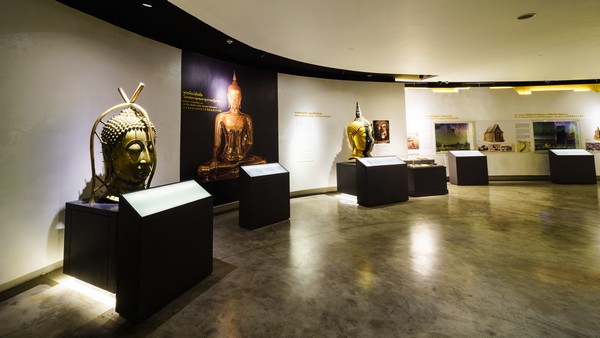
The photo and video gallery display about the sovereign grace of the late King Bhumibhol and the royal family toward the Chinatown Yaowarat. Also, it features the royal duties that connected the relationship between Thai – China.
Last but not least, before you step out of the building there is a gift shop with lots of things for you to grab such as amulets, postcard, and souvenirs.
Things to know before taking the tour at Wat Traimit
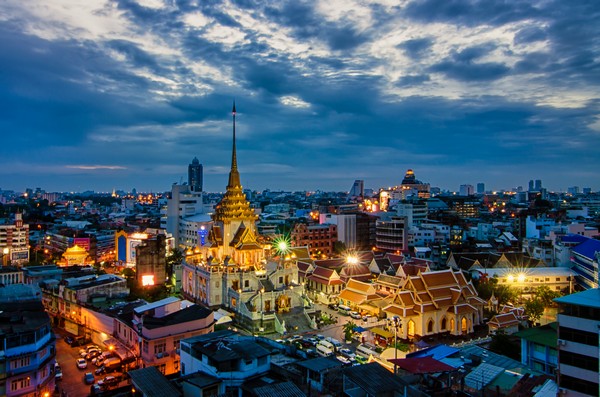
- This place opens to the visitors daily from 8.00am through 5.00pm. It is free of charge for Thai and THB 140 fee for the foreigners.
- Need to get the dress properly with a long sleeve shirt and long pants or a skirt. It is not proper to wear any shorts and skirt with the length over the knees.
- Please be in the proper manner and calm when you are in the temple.
- Do not damage any property of the temple.
- The visitors can take photographs within the temple and the museum. There is the information to guide the visitors to have a smooth and pleasant tour. However, visitors cannot use flash to preserve the condition of the artworks and sacred objects. Additionally, the temple organizes the chanting every Monday evening so the site would switch on the light allowing the photo opportunity at night time.
- Please keep the place clean and tidy.
- The best option for transport to the temple is by MRT (the underground) and getting off at Hua Lamphong Station at the Exit 1. The destination is about 200 meters from the station.

